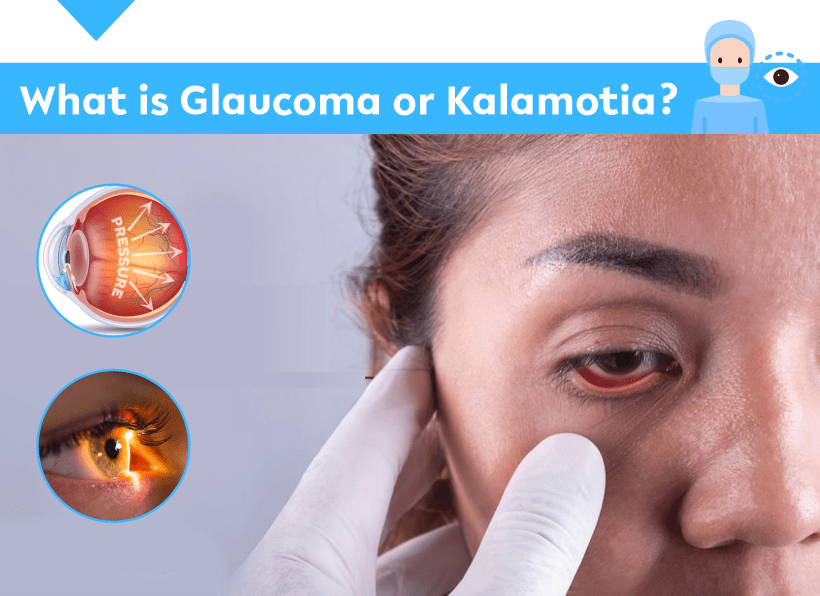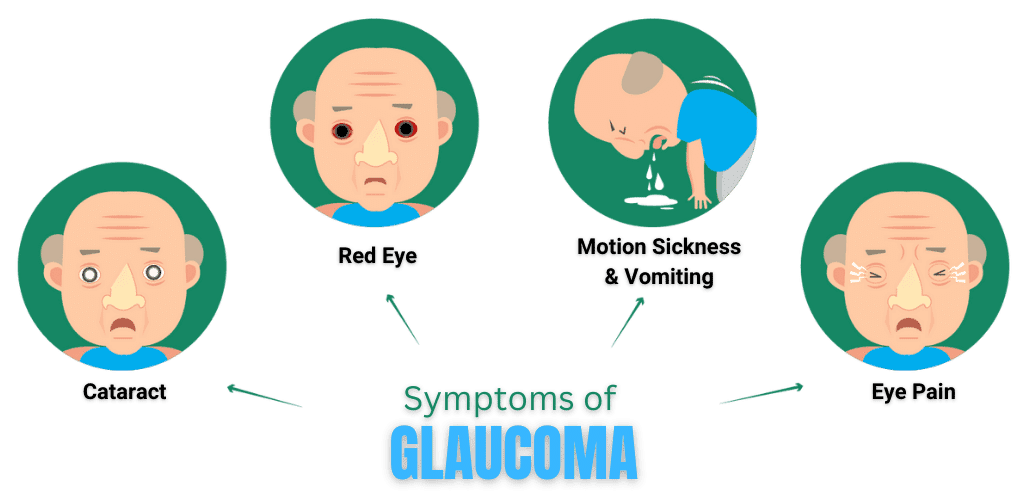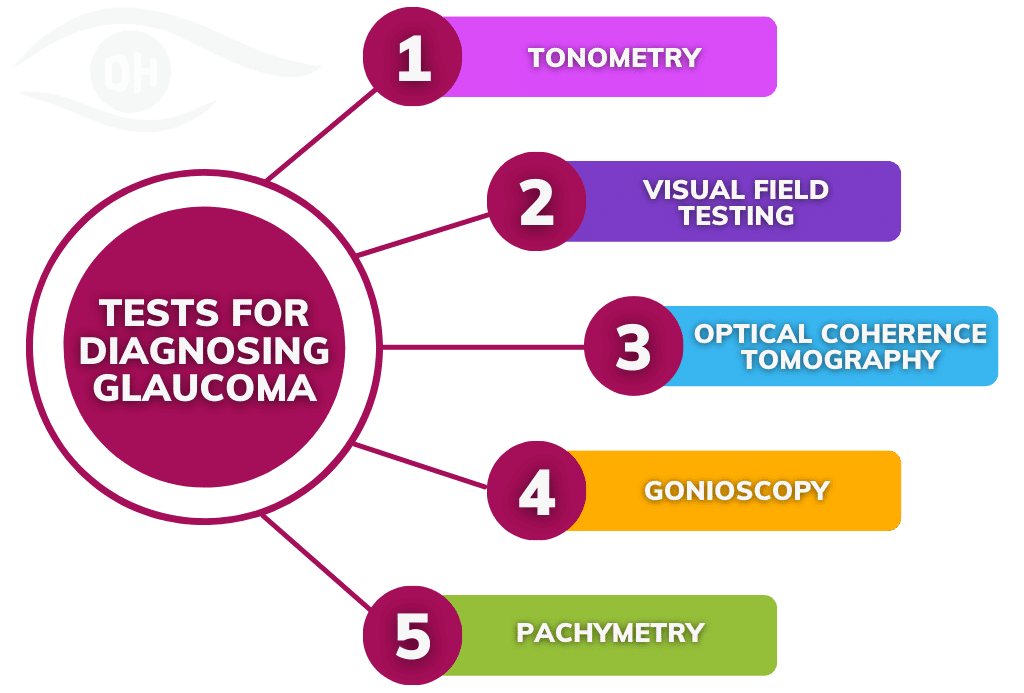Glaucoma, or Kalamotia as it is commonly called in India, is a severe eye disease that, if not treated, can cause vision loss or total blindness. If you have eye or vision problems, consult an eye specialist or ophthalmologist as the first priority. Early detection of Glaucoma or Kalamotia is crucial and can help keep your eyes from getting worse and help you keep your sight.
If you want the best glaucoma treatment in Punjab, you should go to a hospital with highly trained and experienced doctors and the most up-to-date equipment and facilities.
What is Glaucoma or Kalamotia?
Glaucoma, also called Kalamotia, is an eye abnormality that can irreversibly damage the eye’s optic nerve and lead to vision loss or blindness. It is a severe condition that needs to be treated quickly and correctly to prevent permanent eye damage. We’ll talk about the best ways to treat Glaucoma in this article.
What are the symptoms of Glaucoma or Kalamotia?
A patient with Glaucoma or Kalamotia can experience one or more of the following signs.
Gradual loss of peripheral vision: This is often the first sign of Glaucoma, where the person may not see things on the sides or corners of their vision.
- Tunnel vision: As Glaucoma worsens, a person’s field of vision may get smaller, making it so they can only see things right in front of them.
- Blurred Vision: Glaucoma can cause blurred or hazy vision, which makes it hard to see clearly.
- Halos & Glare: People with Glaucoma may see halos or rings around lights, making it hard to see at night.
- Eye pain: Acute angle-closure Glaucoma can cause sudden eye pain, headaches, and blurry vision, as well as other symptoms like nausea and vomiting.
How is Glaucoma (Kalamotia) diagnosed?
Glaucoma is usually diagnosed with a complete eye exam that includes measuring eye pressure, testing the visual field, and looking at the optic nerve. Glaucoma can be treated with eye drops or traditional or laser surgery. Early diagnosis and treatment are essential if you want to stop your vision from getting worse.
How often should I have an eye check-up if I have Glaucoma? (Kalamotia)
Glaucoma or Kalamotia can be stopped from worsening if it is watched and treated on time. Generally, people with Glaucoma should get their eyes checked by a Glaucoma Superspecialist at least every six months to a year.
Check-ups may happen more or less often depending on how bad your Glaucoma is and what treatment you are getting. During these exams, your eye doctor will check your eye pressure, look for signs of damage or deterioration in your optic nerve, and look at your visual field to see if anything has changed.
Depending on how your Glaucoma worsens, your Glaucoma superspecialist may also change your treatment plan. For example, they may change the amount of medicine you take or suggest surgery.
What are the treatment options for Glaucoma (Kalamotia)?
Glaucoma or Kalamotia can be treated with eye drops, oral pills, laser surgery, regular surgery, or lifestyle changes. Work closely with your doctor to determine the best way to treat your condition based on how bad it is and how quickly it worsens. Glaucoma can be managed with the proper treatment and changes to how you live, and permanent vision loss can be avoided.
Eye Drops for Glaucoma treatment
The most common way to treat Glaucoma is with topical eye drops. They work by lowering the pressure in the eye, which is the main reason Glaucoma hurts the optic nerve. Different kinds of eye drops can be used to treat Glaucoma; your doctor will give you the one that works best for you. Prostaglandins, beta-blockers, alpha-adrenergic agonists, and carbonic anhydrase inhibitors are widely used eye drops for Glaucoma.
Oral medicines for Glaucoma treatment
Depending on the severity and associated case presentation, your glaucoma specialist may prescribe pills to be taken by mouth to lower intraocular pressure. Most of the time, these medicines are used with eye drops or other treatments. Most of the time, carbonic anhydrase inhibitors, beta-blockers, and alpha-adrenergic agonists are taken by mouth to treat Glaucoma.
Laser Surgery
Another way to treat Glaucoma is with laser surgery. It is a procedure that is not invasive and can be done in the doctor’s office. Laser surgery is often used when eye drops and pills don’t work or can’t be taken. Laser surgery can be used to treat Glaucoma in several ways, such as trabeculoplasty, iridotomy, and cyclophotocoagulation.
Common surgery
Glaucoma that has gotten worse can be treated with regular surgery. It involves making a new drain in the eye to lower the pressure inside the eye. This procedure is usually done in a hospital or surgery centre while the person is under general anaesthesia. Even though conventional surgery works to lower intraocular pressure, it is more painful and takes longer to heal than other options.
Changes in lifestyle
Glaucoma can also be helped by making changes to the way you live. For example, exercise, a healthy diet, and not smoking can all help lower the pressure inside the eye and protect the optic nerve from more damage. It is also essential to have regular eye exams so that the disease can be tracked and the treatment can be changed as needed.
What are the tests and Investigations for diagnosing Glaucoma or Kalamotia
The following investigations/tests are performed to diagnose Glaucoma:
Tonometry. A common for detecting Glaucoma, tonometry measures the pressure inside the eye. Glaucoma is more likely to happen if your intraocular pressure (IOP) is high. Most of the time, a tonometer is used to do tonometry. A tonometer can be either contact or non-contact.
Visual field testing: This test measures the full range of what you can see horizontally and vertically. It also measures your side vision. During the test, a patient is asked to focus on a central point while light flashes appear in the corners of your eyes. When you see the flashes, you do something. This test helps find problems in the visual field that could be signs of Glaucoma.
Optical coherence tomography (OCT): In this test, cross-sectional pictures of the retina, optic nerve, and macula are taken using light waves. It helps determine if the layer of nerve fibres in the back of the eye is getting thinner, which is an early sign of Glaucoma.
Gonioscopy: A special lens looks at the eye’s drainage angle, where fluid drains out of sight. It can tell if the drainage angle is open or closed, which is essential for determining what kind of Glaucoma a person has.
Pachymetry: This test measures how thick the eye’s transparent outer layer, called the cornea, is. Glaucoma is more likely to happen in people with thin corneas; pachymetry can tell if a person is at a higher risk.
Eye drops make the pupils bigger during a dilated eye exam. This lets the ophthalmologist look at the retina and optic nerve more closely.
These tests can be used together to determine if someone has Glaucoma or to track how the disease worsens. It’s essential to check your eyes regularly, especially if the patient has a known family history of Kalamotia /Glaucoma, high eye pressure, or is over 60 years old.
Can Glaucoma (Kalamotia) be prevented from happening?
No medical evidence to date points to preventing Glaucoma/Kalamotia from happening. However, you can do a few things to lower your chances of getting it. Here are some expert tips from our Glaucoma specialist at the Duggal Eye Hospital Jalandhar
- Regular eye Check-ups: Glaucoma often doesn’t present any early signs, so regular eye exams can help find any early symptoms and, in the process, prevent any irreversible vision loss.
- Monitor your blood pressure: Chronic high blood pressure can contribute to getting Glaucoma, so keeping it in check is essential. Monitoring and remedial steps are hence vital.
- Keep a healthy way of life: Glaucoma is less likely to happen if you eat a balanced diet, work out regularly, and maintain a healthy weight.
- Keep your eyes safe: Avoid eye injuries by adopting protective eyewear while playing sports or doing other strenuous things that could possibly hurt your eyes.
- Quit Smoking: Smoking increases your chances of getting Glaucoma or Kalamotia. If you don’t smoke or stop smoking, your chance of getting Glaucoma proportionately decreases.
While the above shared preventive tips could help lower your chances of getting Glaucoma, one may get it even if they do everything right. Unfortunately, that leaves regular eye examinations as the only way to detect Glaucoma early and stop further vision loss.
What are the different types of Glaucoma (Kalamotia)?
Primary open-angle Glaucoma. As the most common type of Glaucoma, primary open-angle Glaucoma happens when the fluid inside the eye (aqueous humour) drains, causing pressure to build up and damage the optic nerve.
Angle-closure Glaucoma. This arises when the iris is pushed forward and blocks the drainage angle. This causes pressure to build up and damage the optic nerve.
Normal-tension Glaucoma This condition happens even when the pressure inside the eye is normal. It may be caused by not enough blood getting to the optic nerve.
Congenital Glaucoma This is a rare type of Glaucoma affecting babies and young children. It is caused by something wrong with the way the eye drains.
Secondary Glaucoma: This type of Glaucoma is caused by diabetes, high blood pressure, or a side effect of a medicine.
How does Glaucoma affect vision (Kalamotia)?
Glaucoma or Kalamotia causes irreversible vision loss by damaging the eye optic nerve. When the eye pressure called intraocular pressure (IOP) increases, it compresses and damages the delicate fibres of the optic nerve.
Over time, the extra pressure can hurt the optic nerve, which sends information from the eye to the brain about what is seen. If you don’t treat this damage, you could lose your peripheral vision first and then gradually your central vision. As a result, Glaucoma can sometimes make a person completely blind. Because Glaucoma causes slow, painless vision loss, so most people don’t realize they have it until they can’t see as well.
Tips for living with Glaucoma /Kalamotia in general:
- Check your eyesight: Keep track of any changes in how you see and tell your doctor about them.
- Body fitness with brisk exercise improves blood flow and lower intraocular pressure, both of which can lead to Glaucoma.
- Maintain a healthy diet. A healthy diet can help improve your overall health, including your eye health. Eat a lot of antioxidant-rich fruits, vegetables, and other foods.
- Don’t smoke. Smoking makes it more likely to get Glaucoma; if you already have it, it can worsen it. Hence Quit smoking.
- Stress can raise the pressure inside the eye, so manage your stress with medical intervention, meditation, yoga, or anything that alleviates it. Feeling relaxed is essential.
IMPORTANT: Protect your eyes by wearing safety glasses when you play sports or do other things that could hurt your eyes. Take your medicine as prescribed, attend your appointments, and strictly follow whatever medications or precautions your doctors ask.
Remember that early detection and treatment are the keys to managing Glaucoma, so seeing a glaucoma specialist regularly is a must, especially if you have risk factors for the condition.




